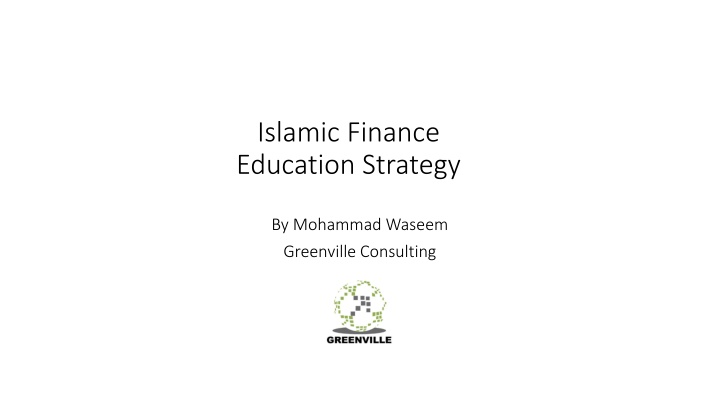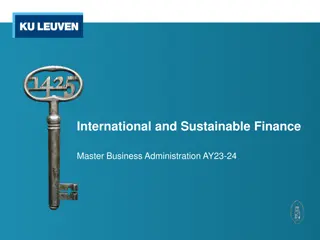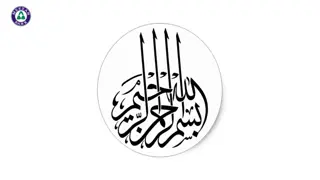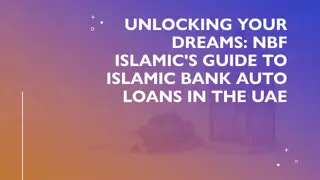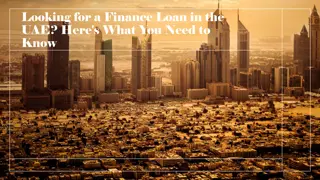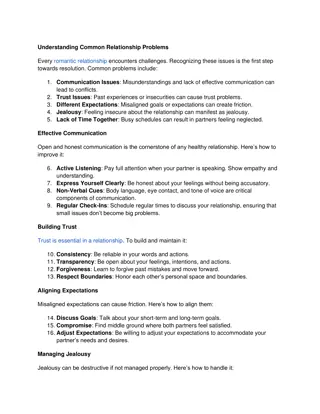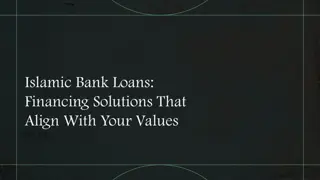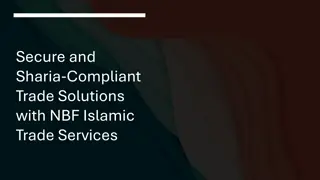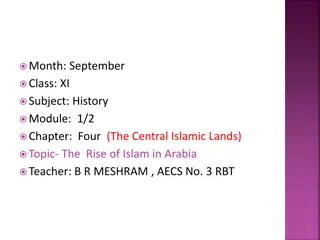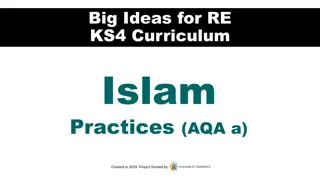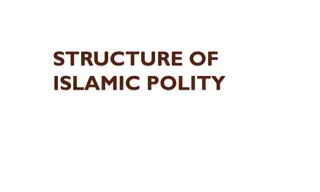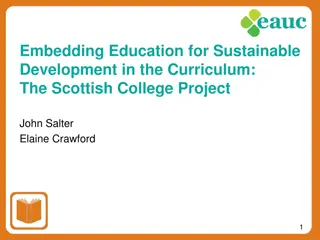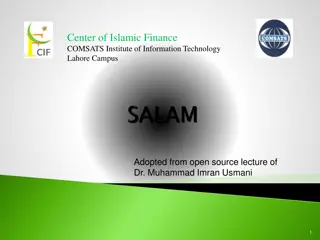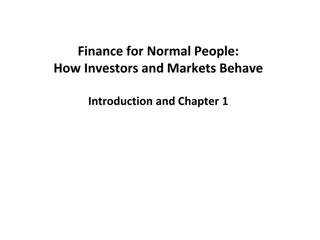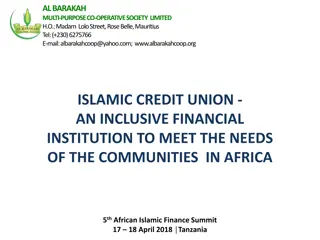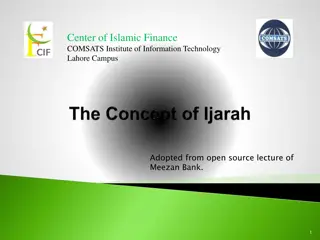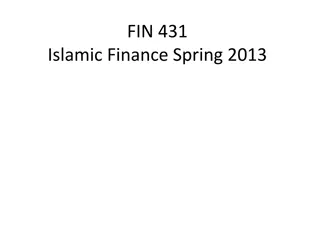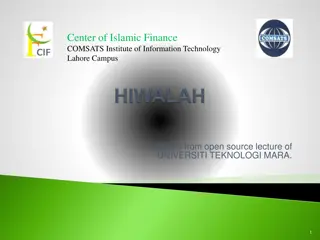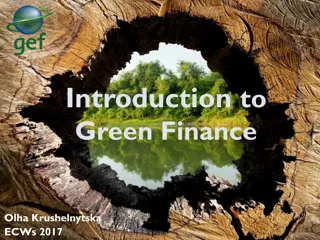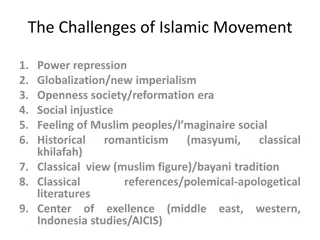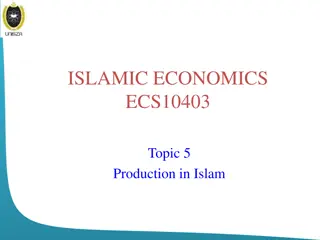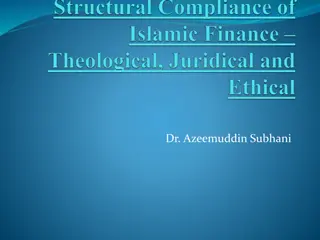Islamic Finance Education Strategy for Sustainable Growth
Witness the strong growth of Islamic Finance globally and explore the strategies needed to sustain this growth. Address the talent gap, product offerings, education programs, quality control, and awareness to propel the industry towards becoming a global leader.
Download Presentation

Please find below an Image/Link to download the presentation.
The content on the website is provided AS IS for your information and personal use only. It may not be sold, licensed, or shared on other websites without obtaining consent from the author.If you encounter any issues during the download, it is possible that the publisher has removed the file from their server.
You are allowed to download the files provided on this website for personal or commercial use, subject to the condition that they are used lawfully. All files are the property of their respective owners.
The content on the website is provided AS IS for your information and personal use only. It may not be sold, licensed, or shared on other websites without obtaining consent from the author.
E N D
Presentation Transcript
Islamic Finance Education Strategy By Mohammad Waseem Greenville Consulting
Where we are? We are witnessing strong growth in the Islamic Finance arena with market share increasing every year. We are at cross roads as Islamic finance is increasingly recognized for its value propositions globally. More Universities are now offering Islamic Finance degrees and programs. More specialized Trainings and Workshops are at offer. Distance Learning Programs ,Publications, Webinars & other Media are slowly but surely creating an opportunity for learners.
Where are we going? A 4 trillion Dollar Industry by 2020. A Muslim population of 2.2 Billion plus in 2030. Can we sustain the growth of our offerings? Can we manage the quality of our product? Do we have the workforce to handle the development? Is there a plan in place?
What are the goals? Islamic Finance to be the leader of the global finance offerings. Alleviating people out of Poverty. Can we write down the goals as you see it?
What have we done so far? Asia Europe Africa Middle East North America Other Countries
What's the issue? Strategy Talent gap Product offerings Education Program offerings Quality control Awareness .
How do we tackle the issue at hand? Planning Planning Planning And then Implementation What's missing?
Educate the people? If we educate people we will have better planners and doers then us that will not only see through the implementation of our strategies but also plan improvements as we move through the growth of Islamic finance. Do majority of Muslims let alone the wider public aware of the Islamic finance and its benefits ? Do we teach Islamic Finance in Schools? Do we teach Islamic Finance at Home?
Where do we start? If we educate people we will have better planners and doers then us that will not only see through the implementation of our strategies but plan improvements as we move through the next level of growth in Islamic finance. Financial education should start as early as possible and be taught in schools. We should help schools train and encourage teachers and parents to provide Islamic financial education for children and youth in order to equip the next generation with better knowledge and skills thus making them partners in the further development of the Islamic Finance Industry.
Educational Strategy? Islamic Financial education in schools should be part of a coordinated strategy. The strategy should have a visible leader or coordinating body to ensure relevance and long term sustainability. The education system and profession should be involved in the development of the strategy. There should be a learning framework which sets out goals, learning outcomes, content, pedagogical approaches, resources and evaluation plans just like our degree and training programs. The content should cover knowledge, skills, attitudes and values. The framework can be national, regional or local but should have the agreed upon basics. Financial education should start as early as possible, ideally from the beginning of formal schooling, and carry on until the end of the students time at school.
Continued Islamic Financial education should ideally be a core part of the school curriculum. It can be, but need not be, taught as a stand-alone subject; integration into other subjects like mathematics, economics or social science can also be effective. Islamic Financial education should be integrated with regular finance lessons in schools. Teachers should be adequately trained and resourced, made aware of the importance of financial literacy and relevant pedagogical methods, and they should receive continuous support and training to teach financial literacy. There should be easily accessible, objective, high-quality and effective learning tools and pedagogical resources available to schools and teachers that are appropriate to the level of study. Students progress should be assessed and their achievements recognised.
The Start One of the reasons the rich get richer, the poor get poorer and the middle class struggles in debt is because the subject of money is taught at home, not at school. Robert Kiyosaki, Educational Entrepreneur.
